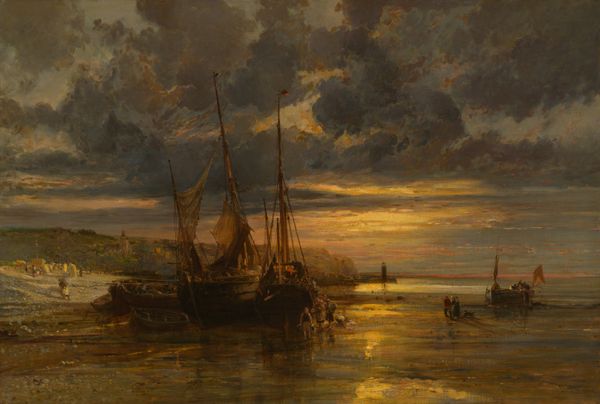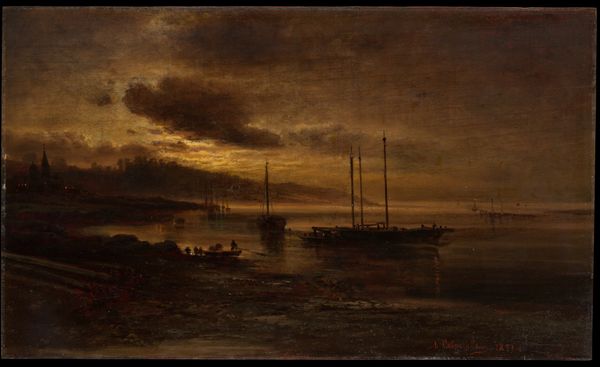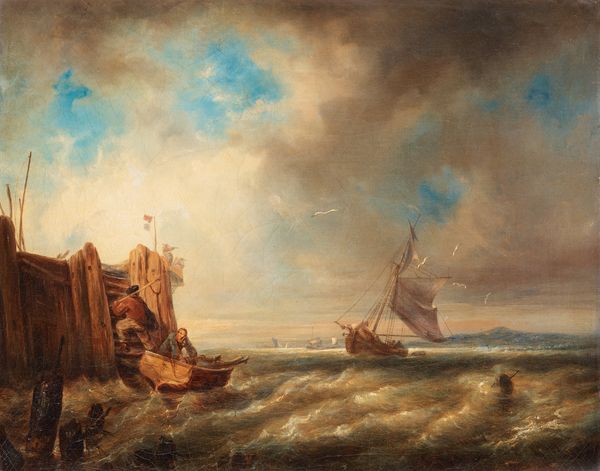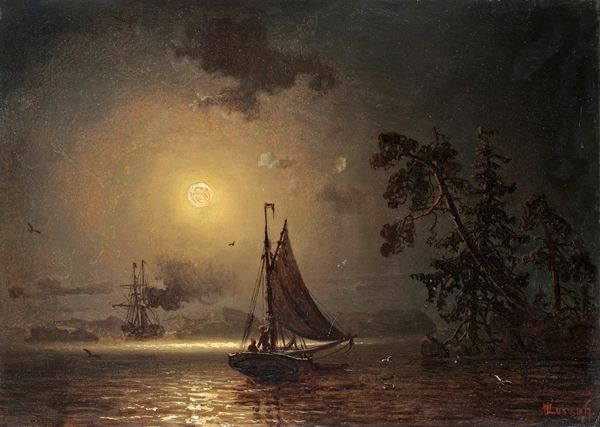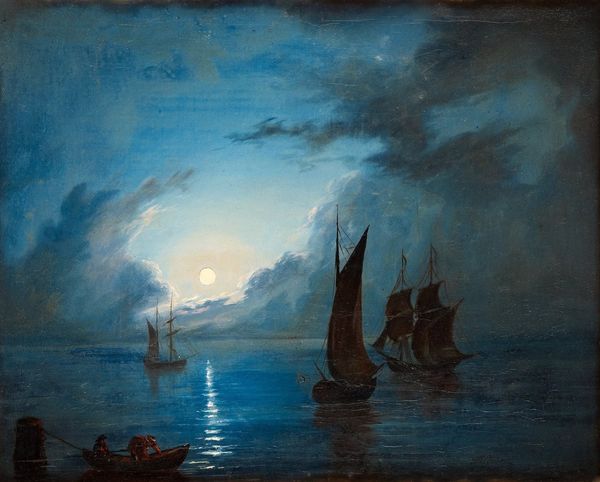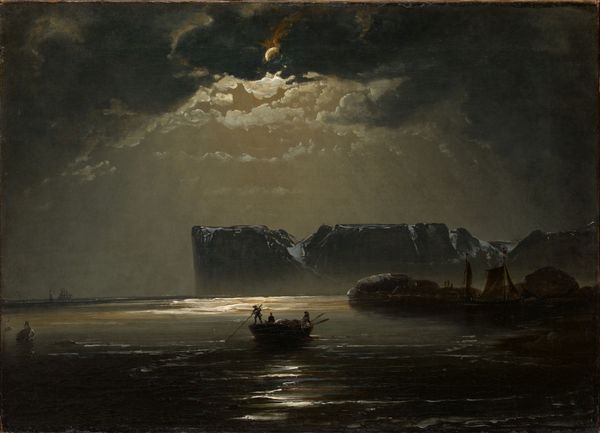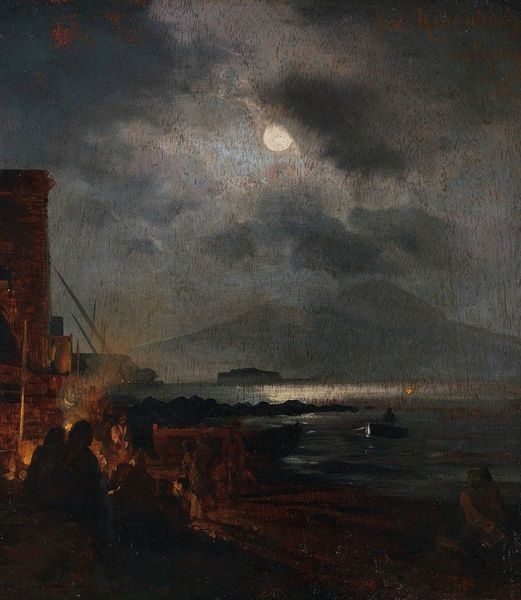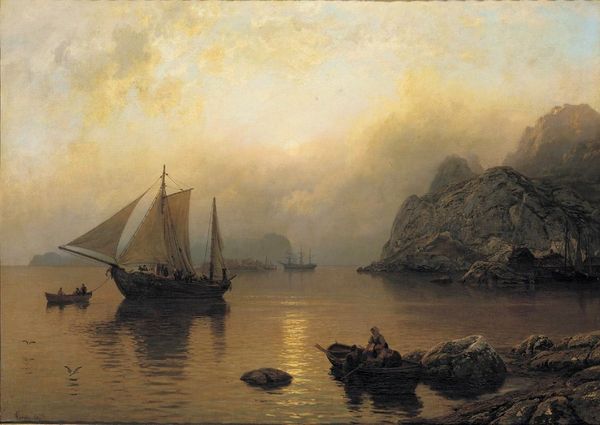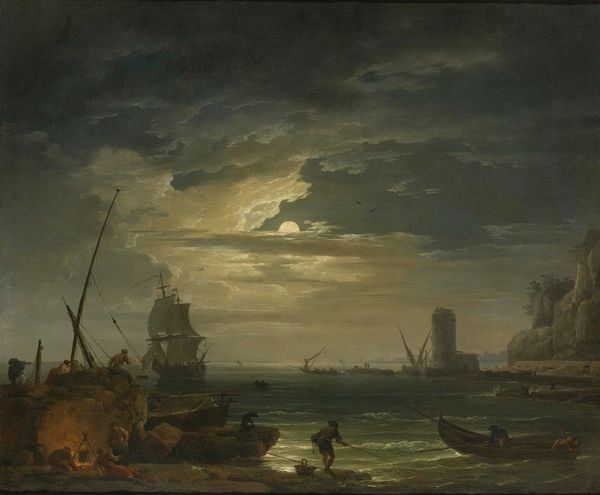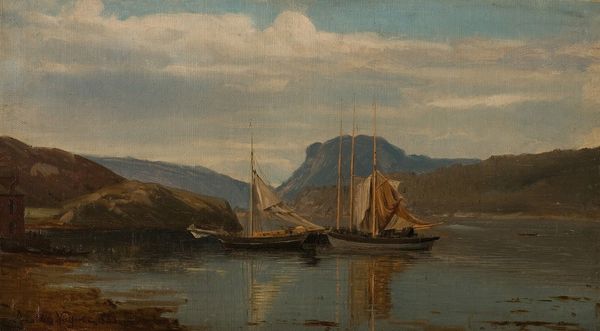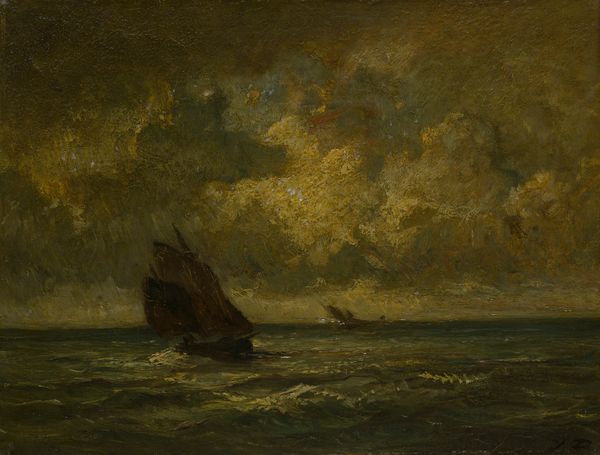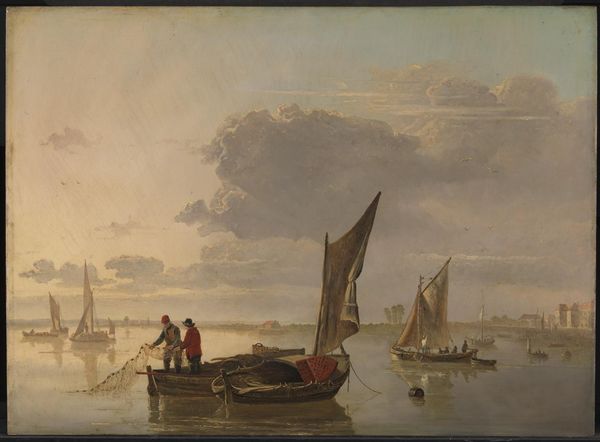
painting, oil-paint
#
painting
#
oil-paint
#
landscape
#
romanticism
#
cityscape
#
modernism
#
sublime
Copyright: Public Domain: Artvee
Curator: Johan Christian Dahl painted "Vesuvius In Eruption. Moonlight" in 1821, an oil-on-canvas piece that really captures a particular moment. Editor: It's quite arresting, actually. The dark palette contrasted with the erupting volcano – there's a real sense of impending doom, a volatile energy in this seascape. Curator: Indeed. Dahl witnessed Vesuvius erupting, which inspired a series of paintings, reflecting not just the event but also its profound impact on the region. His style blends Romanticism with a developing sense of modernism in landscape art. It is crucial to remember that portrayals of nature have often served ideological ends by promoting ideas of national identity, especially through representations of landmarks. Editor: Absolutely, the sublime comes to mind. This is where we see beauty and terror intertwined. The boats seem almost pitiful in the face of nature's power. This reminds us that environmental narratives in art are never apolitical; the history of landscape painting is tied to colonization, industrialization, and exploitation of natural resources. Curator: Precisely. His approach captures a transitional point; although there’s dramatic flair characteristic of Romanticism, there's a move towards documenting a natural event more scientifically, reflecting changes in how society viewed its relationship with the natural world during the early 19th century. The rise of museums influenced these movements; nature now became an object to be studied and displayed as knowledge. Editor: You're right, it's not just a depiction of raw power, but a study. Considering our contemporary understanding of climate change, this depiction of an active volcano resonates differently. It's a potent symbol of forces beyond our control, inviting us to think about accountability, and also about resilience. Curator: Thank you for highlighting these socio-political aspects. The artwork allows for contemplation, certainly, regarding social change and how societies react to the environments they inhabit. It goes beyond visual documentation into realms of cultural anxiety and how art shapes the narrative around these events. Editor: Well, it makes you consider art's engagement with politics and broader questions of history. I keep looking back at the image, seeing new levels in the shadows. Curator: A final word—reflecting upon how artists depict and shape public memory during transformative periods really leaves you pondering. Editor: I wholeheartedly agree. I leave contemplating if it's the place of the artist to incite revolution or encourage discourse?
Comments
No comments
Be the first to comment and join the conversation on the ultimate creative platform.
